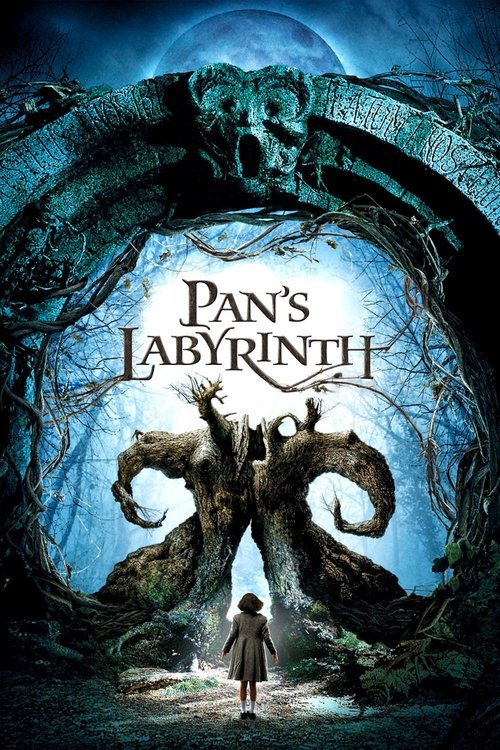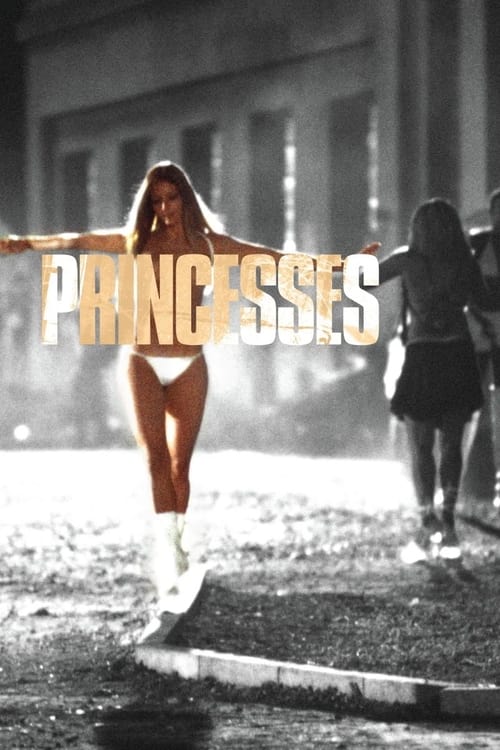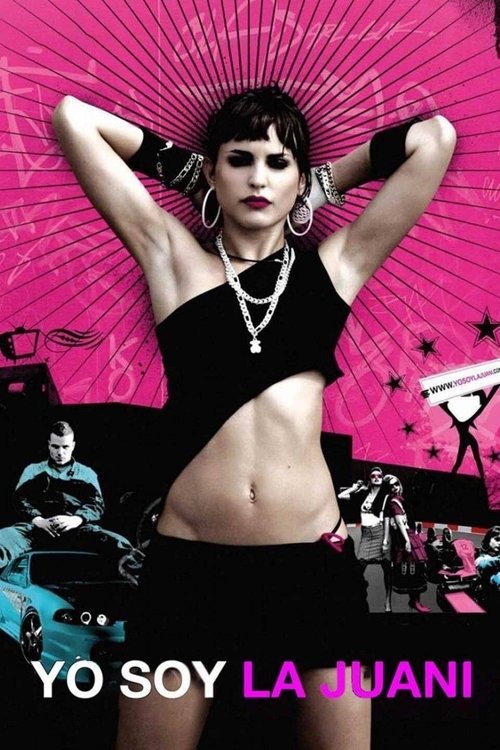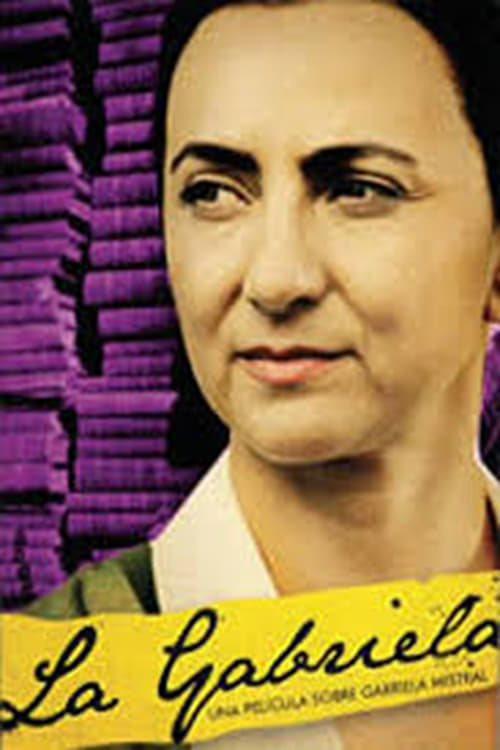
Ask Your Own Question
What is the plot?
XXY (2007): Complete Plot Narrative
The film opens in a small coastal fishing village in Uruguay, where the rhythm of life moves slowly and the sea dominates the landscape. Here, in a modest house perched near the water's edge, lives a family that has deliberately chosen isolation from the world. Kraken, a marine biologist played by Ricardo Darín, has orchestrated this retreat with deliberate intention. His daughter Alex, a fifteen-year-old with an androgynous appearance and a brooding intensity, lives here with her mother Suli, a warm and nurturing woman portrayed by Valeria Bertuccelli. The three of them exist in a carefully constructed bubble, away from the prying eyes and cruel judgments of society.
The reason for their seclusion becomes clear as the narrative unfolds: Alex was born with both male and female sexual organs. At birth, her parents made a radical decision--they refused to have her surgically assigned to one gender. Instead, they chose to let Alex decide for herself when she was old enough to understand the implications. To manage her condition medically, Alex takes corticoids, hormone treatments that suppress her male characteristics, allowing her to be raised as a girl while maintaining the biological reality of her intersex condition. This choice, born from love and progressive thinking, has nonetheless isolated Alex from normal adolescent experiences. She has been moved from place to place throughout her childhood, always fleeing the mockery and invasive curiosity of peers who sensed something different about her.
Now, in this Uruguayan village, Alex has found a fragile peace. She is a solitary figure, somewhat aggressive in her demeanor, as if her body itself has made her defensive. She spends time sketching in a notebook, her drawings revealing the turbulent emotional landscape beneath her guarded exterior. She wanders the beach and the town, existing on the margins of the local teenage social scene, never quite fitting in, always aware of her difference.
This precarious equilibrium shatters when Suli receives a visitor. Her former best friend Erika arrives from Buenos Aires with her husband Ramiro, a surgeon, and their sixteen-year-old son Alvaro. The visit is ostensibly casual--a weekend getaway for old friends to reconnect. But Kraken quickly learns the truth: Suli has invited Ramiro specifically to discuss the possibility of operating on Alex, of finally resolving her condition through surgical intervention. The tension between Kraken and Suli over this decision crackles beneath the surface of their interactions, revealing a fundamental disagreement about how to handle their daughter's future.
Alvaro is a handsome, somewhat privileged teenager from the capital, and his arrival disrupts the careful equilibrium of Alex's isolated existence. Unlike the local teenagers who view her with suspicion and curiosity, Alvaro approaches her with genuine interest. They begin spending time together, initially under the watchful eyes of their parents. There is an immediate attraction between them, though it is complicated by confusion and uncertainty on both sides. For Alex, Alvaro represents a possibility--the chance to be seen as desirable, as normal, as a girl worthy of romantic attention. For Alvaro, Alex's ambiguity and otherness hold a strange fascination.
As the days progress, their friendship deepens into something more intimate. They find moments alone together, away from parental scrutiny. The tension builds between them, a mixture of adolescent desire and genuine emotional connection. Eventually, their physical attraction culminates in sexual intercourse. The scene is portrayed with a sophisticated ambiguity--it is unclear whether this encounter is fully consensual or whether it contains elements of coercion, reflecting the confusion and complexity of adolescent sexuality and Alex's particular vulnerability. The act itself is portrayed with a rawness that some find overly graphic, but it serves a narrative purpose: it forces both teenagers to confront the reality of Alex's body and their own desires and fears.
The aftermath of this encounter sends shockwaves through both families. For Alex, the experience intensifies her confusion about her identity and her sexuality. She has been intimate with a boy, yet she remains uncertain about what this means for her sense of self. The experience does not resolve her questions; instead, it deepens them. For Alvaro, the encounter awakens questions about his own sexuality and his capacity to accept difference. He finds himself drawn to someone who defies easy categorization, and this attraction forces him to examine his own assumptions about gender and desire.
Meanwhile, the pressure from the adults intensifies. Suli, Alex's mother, becomes increasingly vocal about the need for surgical intervention. She wants a "real" daughter, someone whose body aligns neatly with social expectations. She sees Alex's intersex condition not as a natural variation but as a problem to be solved through medical means. Ramiro, the surgeon, represents the possibility of this solution--he is the expert who could "fix" Alex, who could make her body conform to society's demands.
Kraken, by contrast, emerges as a figure of quiet support and acceptance. He is protective of his daughter, but his protection is rooted in respect for her autonomy. He does not want her body altered without her full understanding and consent. He wants her to have the freedom to choose her own path, even if that path is uncertain and unconventional. The relationship between Alex and her father becomes the emotional core of the film, with close-ups revealing the devastation and love in both their faces as they navigate this impossible situation.
Ramiro, Alvaro's father, represents a different kind of parental failure. He is cold, distant, and deeply homophobic. When he discovers the nature of his son's attraction to Alex, he responds with cruelty. In a scene that is described as "too cold, too cruel," Ramiro delivers a brutal lesson in cynicism to his son, rejecting him for his emerging sexuality and his inability to conform to conventional masculine ideals. This moment shatters any illusions Alvaro might have had about his father's acceptance or understanding. The contrast between Kraken's supportive presence and Ramiro's rejection underscores one of the film's central themes: the profound impact of parental response to a child's difference.
Beyond the family drama, Alex also faces cruelty from the broader community. Local teenagers, driven by curiosity and cruelty, chase her on the beach. They pin her down, attempting to physically confirm the rumors about her body, treating her as a curiosity to be investigated rather than a person to be respected. This violation represents the invasive nature of societal judgment and the way difference is often met with aggression rather than acceptance. At another point, Alex breaks the nose of a boyfriend after he attempts to explore her body without her consent or understanding, a moment that reveals her rage at being treated as an object of investigation rather than as a person with agency and boundaries.
Throughout all of this, Alex's sketchbook serves as a visual representation of her inner turmoil. Her drawings express the despair, confusion, and alienation she feels. They are windows into a consciousness struggling to make sense of a body that does not fit into the categories society has created.
As the film moves toward its conclusion, the central question remains unresolved: Will Alex undergo surgery? Will she allow her body to be altered to conform to social expectations? The film does not provide a definitive answer. Instead, it ends on a note of ambiguity and ongoing struggle. The final scenes focus on Alex's solitude and her parents' quiet support. There is no miraculous resolution, no moment where everything suddenly makes sense. Instead, there is the suggestion that Alex's journey is ongoing, that she will have to navigate her identity and her body on her own terms, without easy answers or societal validation.
The ending emphasizes that this kind of story cannot truly end in the conventional sense. Alex's struggle with her identity, her sexuality, and her place in the world is not something that can be neatly resolved through surgery or social acceptance. Instead, the film suggests that the real work of self-acceptance and self-definition is something that must happen internally, over time, through the support of people who love her for who she is rather than for what her body should be.
The final image leaves us with Alex in a moment of quiet reflection, perhaps at the beach or in her room, surrounded by the landscape of her exile and refuge. Her parents remain present but not intrusive, offering support through their quiet acceptance. The film ends not with resolution but with the recognition that Alex's journey toward self-understanding is just beginning, and that the most important thing is not what society demands of her body, but what she herself chooses to become.
Throughout the narrative, no deaths occur. The violence in the film is psychological and social rather than physical. The real tragedy is not death but the way difference is met with cruelty, the way bodies that do not conform are treated as problems to be solved rather than variations to be accepted. The film's power lies in its refusal to provide easy answers, in its insistence that Alex's story is complex, ongoing, and ultimately her own to write.
What is the ending?
In the ending of the movie XXY, Alex, the intersex teenager, makes a significant decision about her identity and future. After a series of emotional confrontations and explorations of her gender identity, she ultimately chooses to embrace her uniqueness. The film concludes with Alex and her family coming to terms with their circumstances, leaving the audience with a sense of unresolved tension but also a glimmer of hope for acceptance.
As the film approaches its conclusion, we find ourselves in the coastal town where Alex lives with her parents, Krystal and Guillermo. The atmosphere is thick with unspoken emotions, as the family grapples with the complexities of Alex's identity.
Scene 1: The tension escalates when Alex's parents have a heated discussion about her future. Krystal expresses her fears about Alex's well-being, while Guillermo tries to maintain a more open-minded perspective. Their differing views create a palpable rift, highlighting the struggle parents face when trying to protect their child while also allowing them to explore their identity.
Scene 2: In a pivotal moment, Alex confronts her own feelings about her body and identity. She has a candid conversation with her friend, who has been supportive throughout her journey. This dialogue is filled with vulnerability as Alex expresses her confusion and fear about the societal expectations placed upon her. The emotional weight of this scene is underscored by the intimate setting, as they sit on the beach, the waves crashing in the background, symbolizing the tumultuous nature of Alex's internal struggle.
Scene 3: The climax of the film occurs during a confrontation with a local boy, who has been both a source of attraction and conflict for Alex. Their interaction is charged with tension, as Alex stands her ground, asserting her identity. This moment is crucial as it showcases her growth and determination to define herself on her own terms. The boy's reaction is a mix of confusion and acceptance, reflecting the broader societal challenges surrounding gender identity.
Scene 4: The final scenes depict Alex's family coming together in a moment of understanding. They share a quiet dinner, the atmosphere lighter than before, suggesting a tentative acceptance of their new reality. Alex's parents exchange glances filled with a mix of love and concern, indicating their ongoing struggle to fully comprehend their daughter's experience.
Scene 5: The film closes with Alex walking along the beach, a symbolic journey of self-discovery. The camera lingers on her face, capturing a blend of determination and uncertainty. As she gazes out at the horizon, the audience is left with a sense of hope that Alex will continue to navigate her path, embracing her identity amidst the complexities of life.
In the end, Alex's fate remains open-ended, reflecting the ongoing journey of self-acceptance and the challenges that lie ahead. Her parents, while still grappling with their own fears, show signs of support, suggesting that they are beginning to understand the importance of allowing Alex to define her own identity. The film concludes without a definitive resolution, emphasizing the ongoing nature of personal and familial acceptance in the face of societal norms.
Is there a post-credit scene?
The movie XXY, produced in 2007, does not have a post-credit scene. The film concludes with a poignant and reflective ending that encapsulates the emotional journey of the characters, particularly focusing on Alex's struggle with her identity and the complexities of her intersex condition. The narrative wraps up without any additional scenes after the credits, leaving the audience to ponder the themes of acceptance, identity, and the challenges faced by those who do not fit into traditional gender norms.
What is the significance of Alex's intersex condition in the story?
Alex's intersex condition is central to the narrative, as it shapes her identity and the dynamics of her relationships with her parents and peers. The film explores the physical and emotional challenges she faces, including the societal pressures to conform to binary gender norms. Alex's struggle with her identity is depicted through her interactions with her father, who is protective yet conflicted, and her mother, who is more accepting but also concerned about societal acceptance.
How does Alex's relationship with her parents evolve throughout the film?
Alex's relationship with her parents is complex and evolves significantly. Initially, her father, who is portrayed as more traditional and protective, struggles to accept her intersex identity, leading to tension and conflict. In contrast, her mother is more nurturing and supportive, but she also grapples with her own fears about Alex's future. As the story progresses, the family faces external pressures, particularly from the arrival of a family friend, which forces them to confront their fears and ultimately leads to a deeper understanding and acceptance of Alex.
What role does the character of Álvaro play in Alex's journey?
Álvaro, the son of a family friend, plays a crucial role in Alex's journey of self-discovery and acceptance. Initially, he is drawn to Alex's uniqueness, and their relationship develops into a complex mix of curiosity, attraction, and confusion. Álvaro's reactions to Alex's intersex condition reflect the societal norms and expectations surrounding gender and sexuality. His character serves as a catalyst for Alex to explore her identity more deeply, as their interactions challenge both of their perceptions of gender and intimacy.
How does the film portray the theme of societal acceptance through the character of Alex?
The film portrays societal acceptance through Alex's experiences and the reactions of those around her. As she navigates her identity, the film highlights the stigma and misunderstanding that intersex individuals often face. Alex's interactions with peers, particularly during her time with Álvaro, reveal the harsh realities of societal expectations. The film captures her internal struggle as she seeks acceptance while also grappling with her own sense of self, ultimately illustrating the broader theme of the quest for belonging in a world that often demands conformity.
What is the significance of the setting in XXY, particularly the coastal town?
The coastal town setting in XXY is significant as it reflects the isolation and confinement that Alex feels regarding her identity. The picturesque yet remote environment serves as a backdrop for the family's struggles, emphasizing their emotional distance and the societal pressures they face. The natural landscape contrasts with the internal turmoil of the characters, particularly Alex, who feels trapped between two worlds. The setting also plays a role in the film's climax, where the isolation becomes palpable, forcing the characters to confront their fears and desires in a more intimate and raw manner.
Is this family friendly?
"XXY," produced in 2007, is a film that explores complex themes surrounding gender identity, sexuality, and the struggles of adolescence. It is not considered family-friendly due to several potentially objectionable or upsetting aspects, including:
-
Graphic Discussions of Intersex Conditions: The film delves into the medical and emotional implications of being intersex, which may be difficult for younger audiences to understand.
-
Sexual Content: There are scenes that involve nudity and sexual exploration, which may be inappropriate for children.
-
Violence and Aggression: The film includes moments of physical confrontation and emotional turmoil that can be intense and distressing.
-
Parental Conflict: The dynamics between the characters, particularly the parents and their struggles with acceptance, can be emotionally charged and may resonate negatively with sensitive viewers.
-
Themes of Identity and Acceptance: The exploration of identity can be heavy and may provoke discomfort in viewers who are sensitive to issues of belonging and self-acceptance.
Overall, the film's mature themes and emotional depth make it more suitable for adult audiences rather than children or sensitive individuals.


































